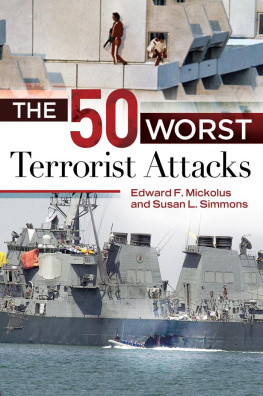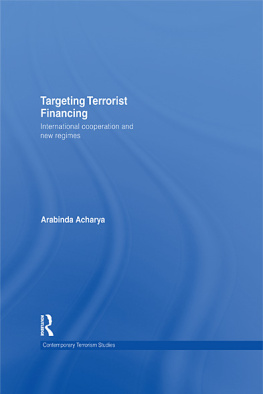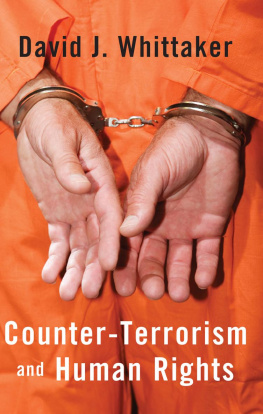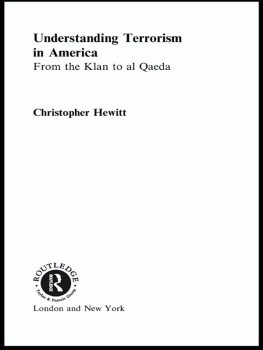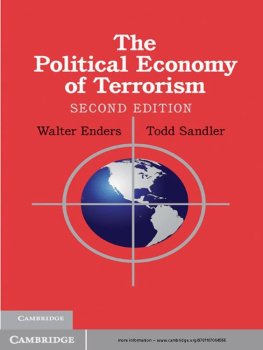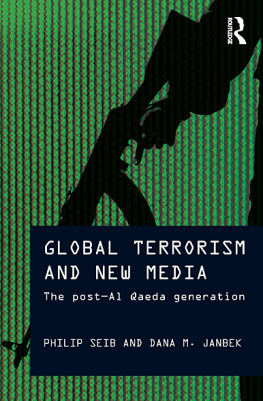Terrorism,20132015
Also by Edward Mickolus
The Counterintelligence Chronology: Spying by and Against the United States from the 1700s through 2014 (McFarland, 2015)
Terrorism, 20082012: A Worldwide Chronology (McFarland, 2014)
Terrorism, 20132015
A Worldwide Chronology
Edward Mickolus

McFarland & Company, Inc., Publishers
Je f ferson, North Carolina
For Deborah M. Hixon, who gave her life for our country
Library of Congress Cataloguing-in-Publication Data
Names: Mickolus, Edward F., author.
Title: Terrorism, 20132015 : a worldwide chronology / Edward Mickolus.
Description: Jefferson, North Carolina : McFarland & Company, Inc., 2016. | Includes bibliographical references and index.
Identifiers: LCCN 2016026701 | ISBN 9781476664378 (softcover : acid free paper)
Subjects: LCSH: TerrorismHistoryChronology. | TerrorismBibliography.
Classification: LCC HV6431 .M4996 2016 | DDC 363.32509/0512dc23
LC record available at https://lccn.loc.gov/2016026701
British Library cataloguing data are available
ISBN (print) 978-1-4766-6437-8
ISBN (ebook) 978-1-4766-2589-8
2016 Edward Mickolus. All rights reserved
No part of this book may be reproduced or transmitted in any form or by any means, electronic or mechanical, including photocopying or recording, or by any information storage and retrieval system,without permission in writing from the publisher.
Front cover image 2016 iStock
Printed in the United States of America
McFarland & Company, Inc., Publishers
Box 611, Jefferson, North Carolina 28640
www.mcfarlandpub.com
Table of Contents
Introduction
The number of my volumes of event chronologies and biographies of international terrorists now tops 20 in the past four decades. Of particular concern is that the volumes are getting longer, as individuals and groups keep escalating their attacks. On the plus side, the list of terrorists killed or incarcerated also substantially expanded.
This book uses the same definition of terrorism as found in its predecessors, allowing comparability across decades. Terrorism is the use or threat of use of violence by any individual or group for political purposes. The perpetrators may be functioning for or in opposition to established governmental authority. A key component of international terrorism is that its ramifications transcend national boundaries, and, in so doing, create an extended atmosphere of fear and anxiety. The effects of terrorism reach national and worldwide cultures as well as the lives of the people directly hurt by the terrorist acts. Violence becomes terrorism when the intention is to influence the attitudes and behavior of a target group beyond the immediate victims. Violence becomes terrorism when its location, the victims, or the mechanics of its resolution result in consequences and implications beyond the act or threat itself.
Trends
Recent terrorist activities have required a rethinking about what constitutes international versus domestic terrorism, and may in turn dramatically alter the conclusions that we can derive from quantitative analysis of terrorist attacks. Is an individual who stays in his country and attacks fellow citizens, but announces his fealty to, say, the Islamic State and was inspired by IS websites and writings, an international or domestic terrorist? Does IS taking credit after the event, but with no other apparent operational ties to the terrorist or terrorist team, put the attack into the international category? We are seeing more and more of these home-grown lone wolvesand, alas, pairs and cells of such home-grown threatswith no indication that this trend will let up any time soon.
Most attacks continue to be low-level, unsophisticated bombings and shootings, with terrorists going after targets of opportunity rather than mounting complex operations that had typified the first generation of al Qaeda. Those are not, however, the attacks that gain the most publicity.
Media attention flocks to the use of high-tech weapons that result in mass casualties. Security organizations spend the bulk of their resources attempting to foil such depredations. But withdrawal of a specific type of weapon does not stop terrorist attacks. As was the case with the effective end of aerial hijackings, if a method is taken off the table, terrorists will move to another method, sometimes using appreciably simpler weapons. In areas in which access to guns is limited, terrorists resorted to edged weapons. This was particularly noteworthy in:
China, where individuals and more organized groups used knives and swords
Bangladesh, which had a rash of slashings of secular bloggers
Iraq and Syria, where the Islamic State beheaded many alleged apostates, spies, and hostages
Israel and the occupied territories, where slashers abounded during an October 2015 intifada
the United Kingdom, where slashers killed and almost beheaded a soldier.
Even this simple method of operation allows attackers to inflict mass casualtiesdozensquickly.
The overarching trend during the period of 2013 to 2015 was the risein publicity, numbers of adherents, power over the jihadi movement, and extent of territory capturedof the Islamic State and its affiliates. Also known as the Islamic State of Iraq and the Levant (ISIL, used in U.S. government pronouncements), Islamic State of Iraq and Syria (ISIS, used by the Western news media), and Daesh (its Arabic acronym), the group has become arguably the most successful terrorist group in the world on a number of counts:
IS has attracted perhaps 30,000 fighters from at least 100 countries. (These numbers are difficult to pin down, but dwarf the membership of the terrorist groups of earlier eras.) Many of these recruits have traveled to Syria and Iraq to participate in the effort to create a return to the era of Muhammad. Entire familiesor sometimes teen members of families oblivious to their hidden radical sentimentshave left their homes and crossed into IS territory to join the cause. By some accounts, 1,000 foreign fighters join IS ranks each month. For those who cannot travel, at least 46,000 proIS Twitter accounts have been identified. (As an aside, thousands of these sites have been taken down by the Anonymous hackers new antiIS campaign.)
After beginning its life as the al Qaeda affiliate in Iraq with tentative feelers in Syria, IS has taken over and held nearly one-third of the territory of Iraq and Syria; stated differently, roughly the size of Indiana. Within this territory, IS declared an Islamic caliphate, holding territory and establishing a proto-government, replete with coins, judicial and enforcement wings, and other trappings of governance, based upon its interpretation of sharia law.
IS has become the most financially well-heeled terrorist organization of its generation. By some counts, its raiding of Iraqi oil wells alone generated up to $5 million per day. It also receives monies from like-minded devotees, from sales of pilfered antiquities, and taxes on supporters and on Christians and minority religious groups stuck in IS-controlled territory.
IS has kept itself in the news through ever-ratcheting brutality, issuing threatening videos of Western and Japanese civilian hostages and captured soldiers who are later beheaded, immolated, or crucified on video. The group has forced child soldiers to participate in propaganda videos that feature them killing hostages. Other atrocities have entailed IS thugs sledgehammering and bulldozing ancient statues, churches and temples that have been pilfered of antiques for sale on the black market. IS caliph Abu Bakr al-Baghdadi reportedly repeatedly raped U.S. hostage Kayla Mueller before she was killed and its Research and Fatwa department had justified running a burgeoning sexual slavery market and the rape of nonMuslim preteens. IS has been suspected of using chemical weapons, principally mustard gas, in Iraq. IS has not been without competition in gruesome cruelty, as Boko Harams Abubakar Shekau, or his mustache-twirling body doubles, delighted in issuing videos announcing the groups kidnapping hundreds of young girls, selling them into sexual slavery, and deploying them as unwitting suicide bombers.



